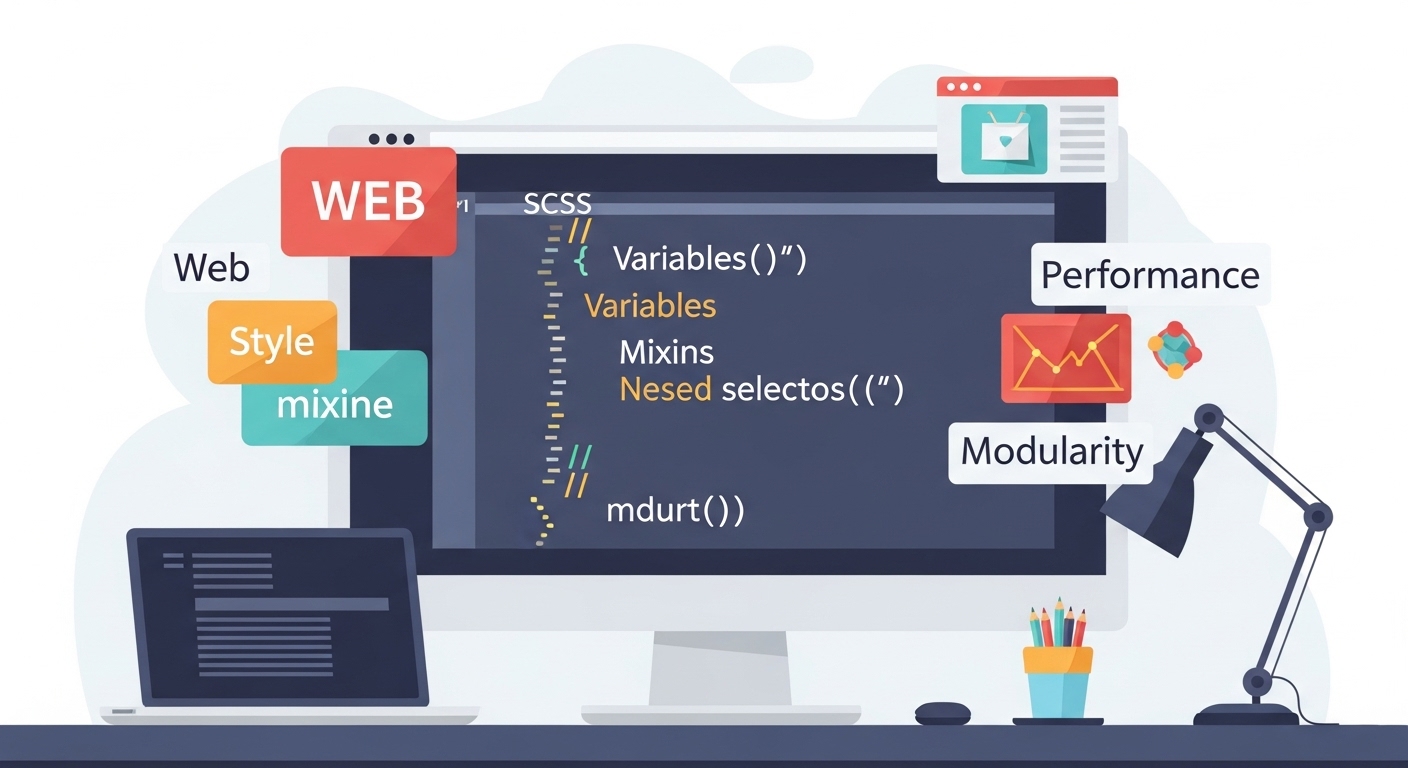When diving into the world of web development, one of the first questions that comes up is: what is SCSS vs CSS? This confusion is common among beginners and even some experienced developers. Understanding the distinction between these two stylesheets is crucial for writing clean, scalable, and maintainable code.
In this article, we’ll break down the key differences between SCSS and CSS, explore their advantages, use cases, and help you decide which one to use in your next project.
You may also like: HTML Meta Tag Redirect: 7 Powerful Ways for Seamless Redirection
What is CSS?
CSS stands for Cascading Style Sheets. It is the standard styling language used to define how HTML elements appear on a webpage. CSS controls layout, colors, fonts, spacing, and responsiveness.
Example CSS:
body {
font-family: Arial, sans-serif;
background-color: #fff;
color: #333;
}CSS is supported by all web browsers and is an essential building block of frontend development. However, as projects grow in size, CSS can become hard to manage.
What is SCSS?
SCSS, or Sassy CSS, is a syntax of Sass (Syntactically Awesome Style Sheets). SCSS is a CSS preprocessor that adds advanced features like variables, nesting, mixins, inheritance, and functions.
Example SCSS:
$primary-color: #3498db;
body {
font-family: Arial, sans-serif;
background-color: $primary-color;
color: darken($primary-color, 20%);
}SCSS must be compiled into regular CSS using tools like Dart Sass, Webpack, or Gulp before it can be interpreted by browsers.
Top 10 Differences: What is SCSS vs CSS
Let’s compare SCSS vs CSS to help clarify their core differences.
Syntax and File Extension
- CSS: Uses
.cssextension with standard syntax. - SCSS: Uses
.scssextension with extended syntax.
Variables
- CSS: Limited support via
:rootand custom properties. - SCSS: Full-featured variables with
$syntax.
Nesting
- CSS: No support for nesting.
- SCSS: Allows nested rules for better readability.
Mixins
- CSS: No mixin support.
- SCSS: Offers reusable code blocks using
@mixin.
Functions and Operations
- CSS: Very basic support.
- SCSS: Full mathematical and string functions built-in.
Code Reusability
- SCSS enhances reusability through
@extend, mixins, and modules.
Maintenance
- SCSS makes large stylesheets easier to maintain with modular structure.
Browser Compatibility
- Both are compatible since SCSS is compiled to CSS.
Compilation Step
- CSS: No compilation required.
- SCSS: Requires a build process to compile.
Learning Curve
- CSS: Simpler for beginners.
- SCSS: Slightly steeper learning curve but more powerful.
Advantages of Using SCSS
Now that we’ve covered what is SCSS vs CSS, let’s explore the reasons why many developers prefer SCSS.
Better Organization
SCSS allows breaking down styles into smaller files (partials) and importing them as needed.
Scalability
As projects scale, SCSS makes managing styles far easier than vanilla CSS.
Maintainability
With variables and mixins, changes in design systems can be made by editing a single line of code.
When to Use CSS Instead of SCSS
Despite the power of SCSS, CSS still has its place:
- Small projects or static sites
- Quick prototypes
- When SCSS tooling is unavailable
CSS is faster to implement in simple scenarios and doesn’t require a build setup.
SCSS and CSS in Real-World Projects
In modern frameworks like React, Vue, and Angular, SCSS is often used to modularize styles and improve code quality.
Popular platforms like Bootstrap 5 now use SCSS for flexibility and customization.
Learn more about SCSS on the official Sass website.
Conclusion: Which One Should You Choose?
If you’re still wondering what is SCSS vs CSS, here’s a final takeaway:
- Choose CSS if you’re building a small site or just starting out.
- Choose SCSS for medium to large projects, or when working in teams.
The decision depends on your project size, team needs, and comfort with tooling.


Leave a Reply